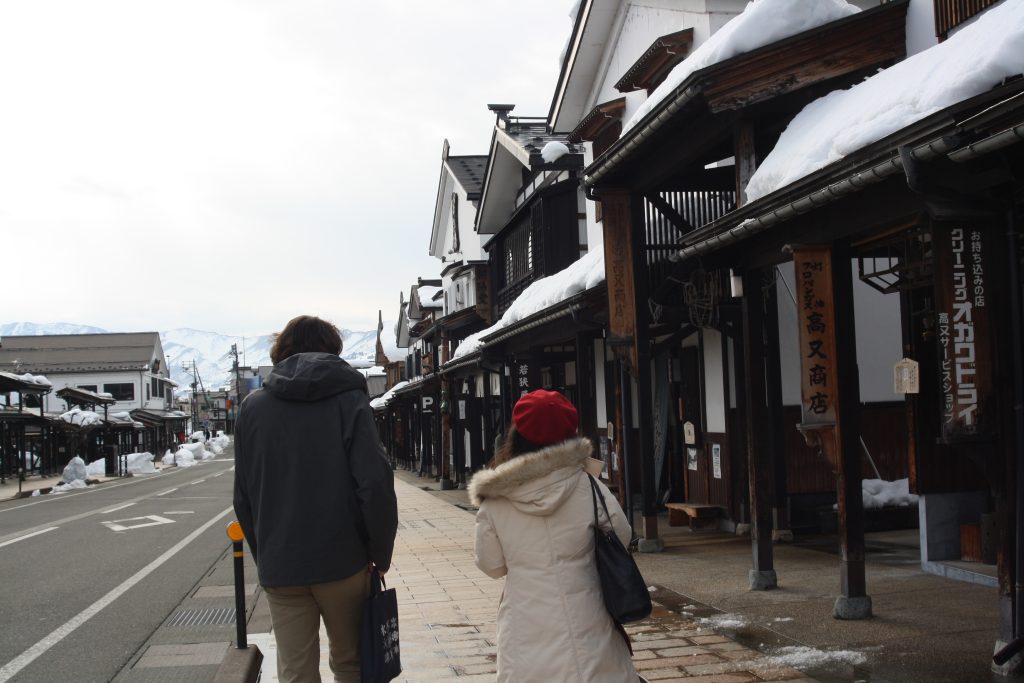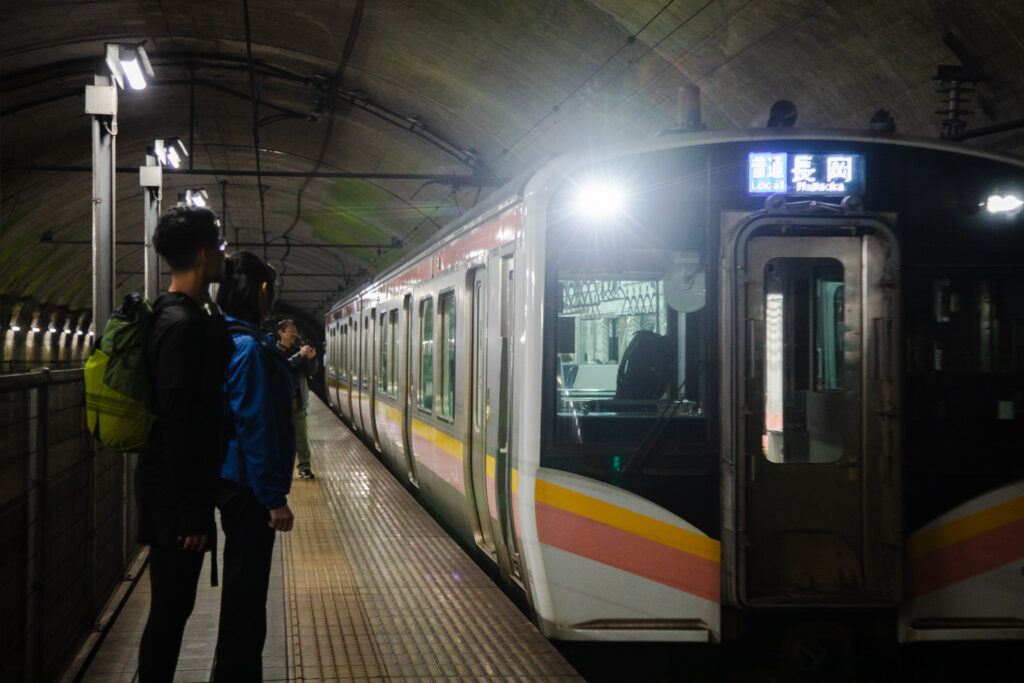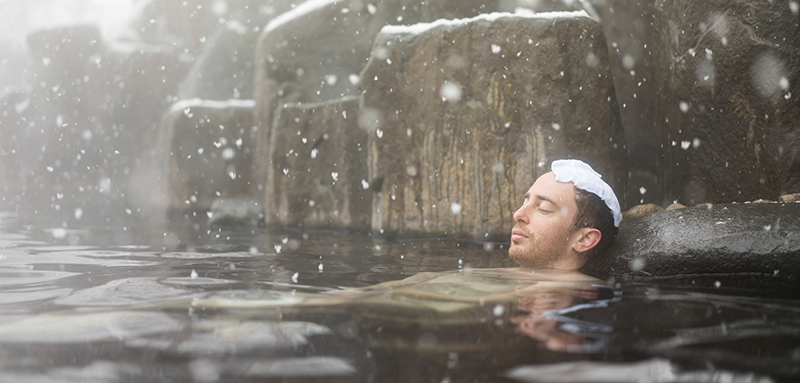Previously, we talked about “Yukiguni Style” and how travelers to Japan and Snow Country can experience our unique way of life. Everything-from the meals you eat, to the inns where you sleep, and the trails you walk upon- all call back to the same ancient YUKIGUNI lineage, which has been handed down to the present day.
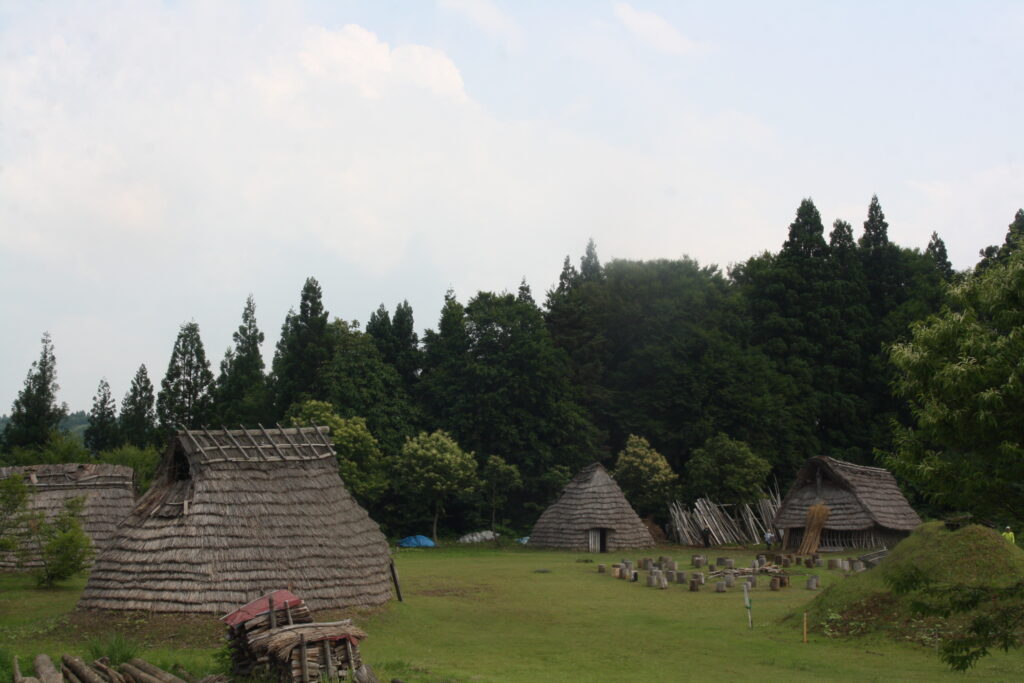
Jomon Ginza and the Geopark
When we talk of preserving an ancient lifestyle, just how old are we talking? Well, in some cases, you can trace the cultural heritage of Snow Country back 8,000 years or more! If we are to begin at the beginning, let’s talk about the Jomon. The Jomon were noted as an egalitarian, non-hierarchical society that lived in peace with the natural world around them for thousands of years.
These Jomon were nomadic groups of hunter-gatherers that once lived all over Japan, but were especially prevalent around the Shinano River in Niigata and Nagano, to the extent that this area is sometimes called “Jomon Ginza.” It is said that the Jomon were able to thrive without needing to cultivate rice or raise livestock, and instead fished in the rivers and foraged for edible plants and nuts. The Jomon were said to be very in touch with the natural world, even being able to predict changes in the climate.

You can see evidence of the Jomon even now, for example, at Tsunan’s Naeba Sanroku Geopark. Enjoy the Geopark’s grand canyons and pure streams, or sample some of the delicious beer and sake made with its pure water. In Japan, Shinto and Buddhist beliefs often exist together side-by-side, and at Midama Fudoson Temple, a thousand year old Buddhist power spot inside the park, you can view the fall colors from a large temple atop a hill above a waterfall. It is a great chance to experience a lesser-known piece of local history, in a country that traditionally views Gods existing as part of nature. You can also find unique open-air baths nearby at Kiriyake and Koakazawa- for more info about historical “hidden onsen” in Snow Country, click HERE.
The area around the Naeba Sanroku Geopark, including Akiyamago, is also known for its minshuku. Different from an eco-lodge, staying at a local minshuku can be thought of as more akin to a short homestay, where you can feel much closer to your hosts and talk freely with them, while learning about the YUKIGUNI way of life. A highlight of the best minshuku is the food: at many minshuku around these parts (such as Deguchiya) it is common to be served jibie- from the French “gibier”- also known as wild game cuisine, during the winter months. The tradition of eating wild game in Snow Country goes back hundreds of years to the Matagi, nomadic tribes of hunters and trappers who traveled from Northern Japan to put down roots here, where they exist to this very day.
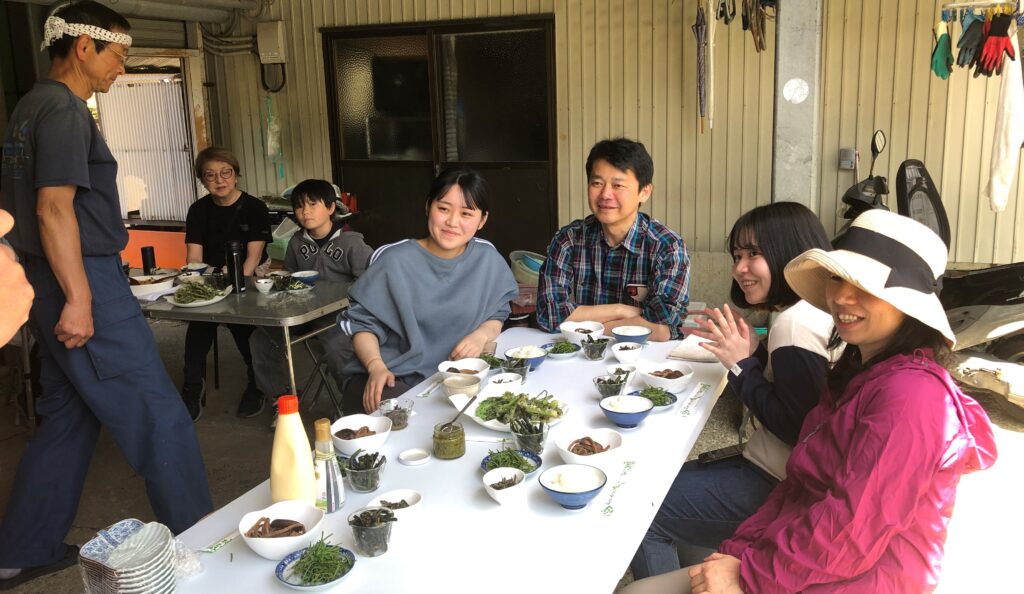
Eating in Yukiguni Style
If staying in a rustic minshuku is not quite your speed, there are other places where you can try gibier, with selections ranging from traditional winter nabe stews made with bear meat, to hot dogs and hamburgers made with local deer or wild boar. Aside from just meat, the unique mountain cuisine of Snow country has been noted as very vegetarian friendly, such as at old style restaurants like Irori Jinen, a farm-to-table affair that uses local produce for historical cuisine that is a far cry from ramen and yakitori!
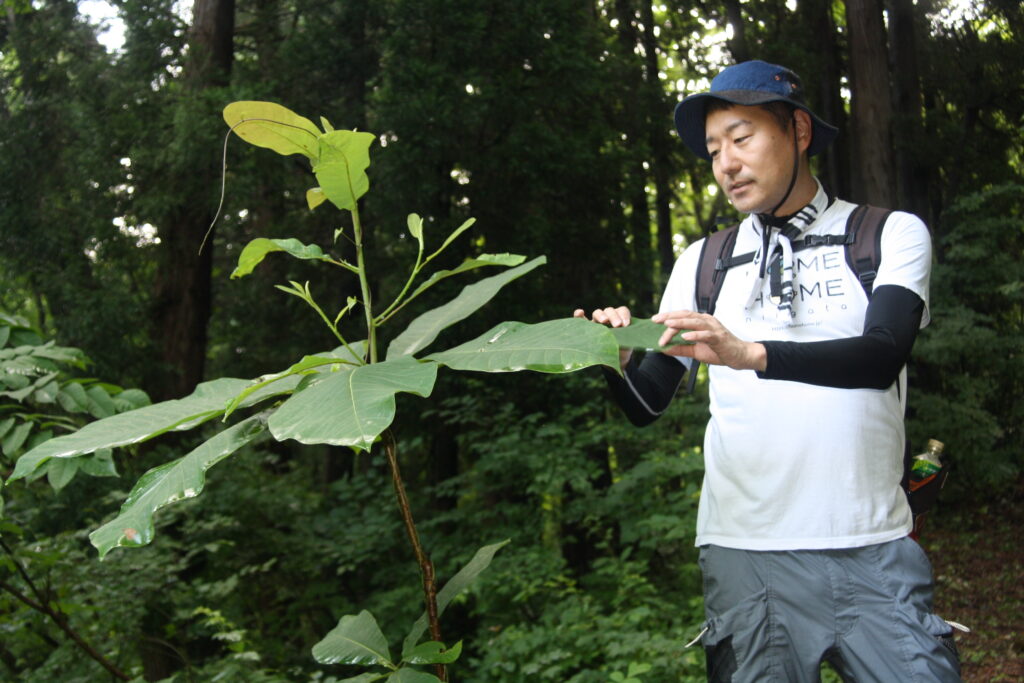
In fact, the things that grew in the nearby mountains served many purposes: as food, medicine, or even clothing! There are many hiking tours here where you will learn from your guide about the wide variety of plants that grow in the mountains of YUKIGUNI. Along the trail you may see wild strawberries or pears that grow here, as well as mountain vegetables called “sansai.” There are a wide variety of sansai in these mountains, including: kogomi (ostrich fern), tara no me (Japanese angelica), fuki (butterbur), and more. Lindera, or kuromoji, is a local herb that grows in abundance in this area that is used in herbal teas and essential oils. Kuwa (mulberries) are sometimes turned into juice or jam, and karamushi, or ramie is used to make Echigo Jofu cloth. This fabric is then turned into beautiful and highly prized kimonos, but here you have the privilege of seeing it while it is still growing. On one of our many tours of the area, you can also see our rice terraces called tanada, which showcase both our long history as a rice growing area as well as YUKIGUNI’s unique topography.
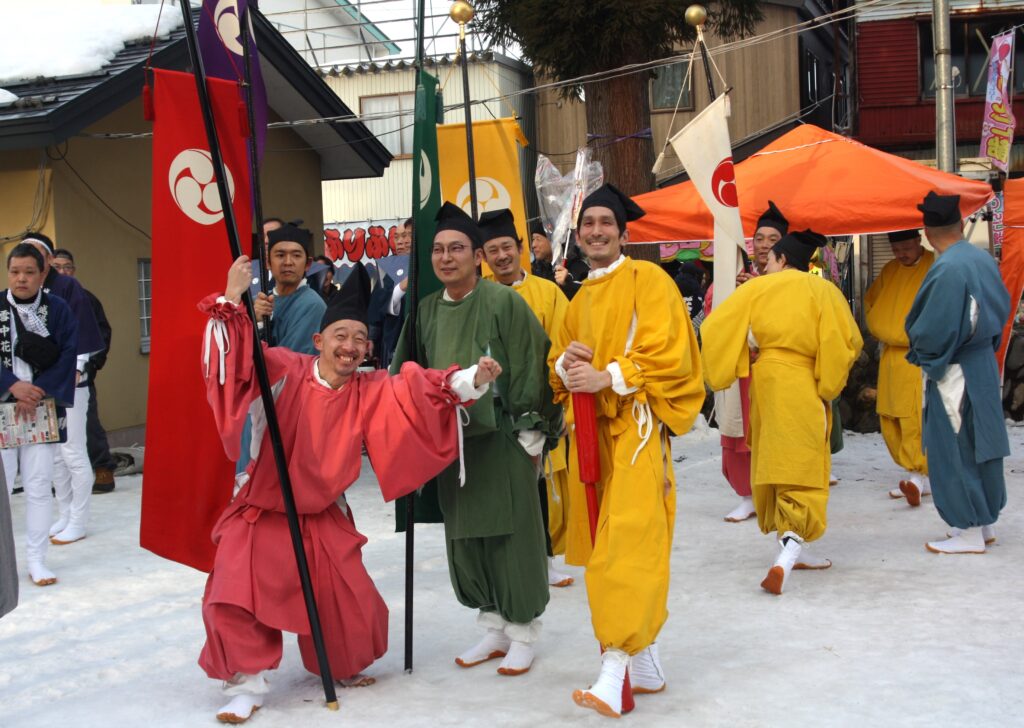
Join a historical “strange festival”
Another important part of our history that you can see (and join) are our unique local festivals known as the Echigo Kisai, or “Strange Festivals of Echigo.” For example, February 11th is the day of a local festival called Hanamizu Iwai. From the Muromachi period of the 14th century onwards, it became increasingly common for bridegrooms in samurai families to be dunked in water in order to wish for the birth of healthy children. Soon after, this custom began to be adopted by the common folk as well. In the YUKIGUNI area, this ceremony took on a special religious significance, as Shinto blessings were recited and villagers took on the roles of Shinto deities Sarutahiko and Uzume. Despite its importance, in 1874 all such water-dunking festivals were outlawed by the government.
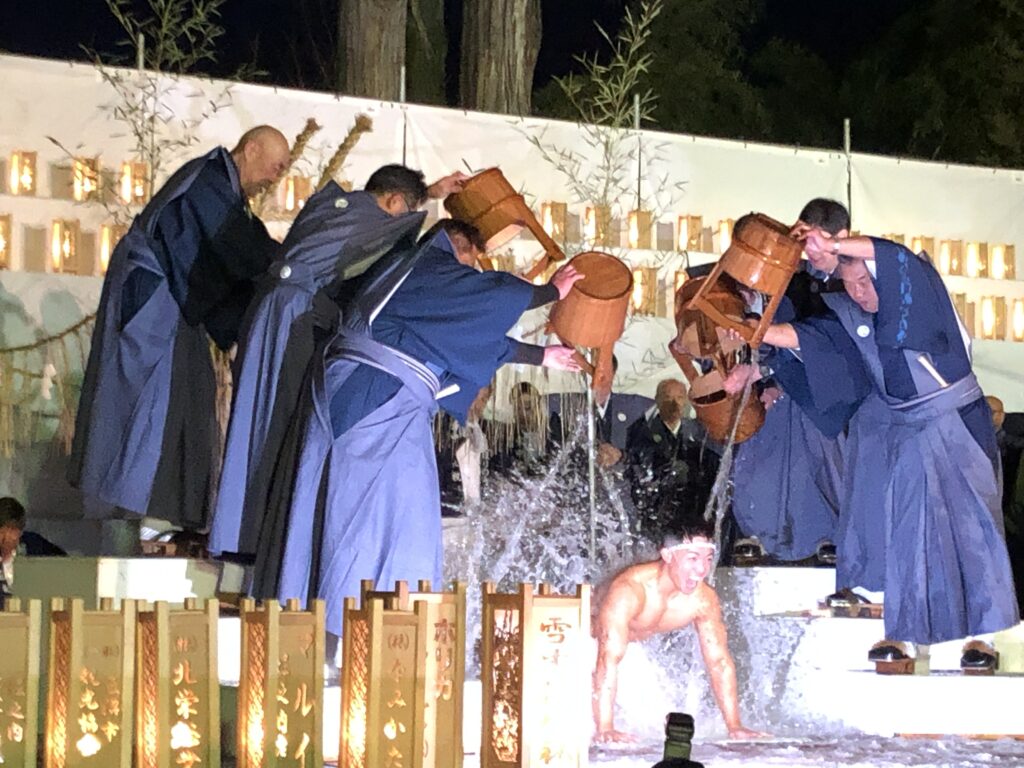
In 1988, the amalgamated town of Horinouchi (now a part of Uonuma City) decided to reclaim this part of their culture by restarting the Hanamizu Iwai Festival, and it has been held here ever since! The festival is held in the area around the Horinouchi Hachimangu Shrine. In order to wish for a healthy child, a newlywed groom will pray at this shrine while mostly naked in the snow, then all of the grooms are paraded around the festival ground. On their return they light a ceremonial fire, and then a conch shell will blow to signal each aramuko, or bridegroom, to come to the dais. The festival culminates in the aramuko getting buckets of freezing water poured all over them, and concludes with a small fireworks display. If you are an early arrival to the festival, you will be able to see a taiko drum performance in the afternoon. Recently, the festival has continued to evolve with the addition of Yosakoi dance performances!
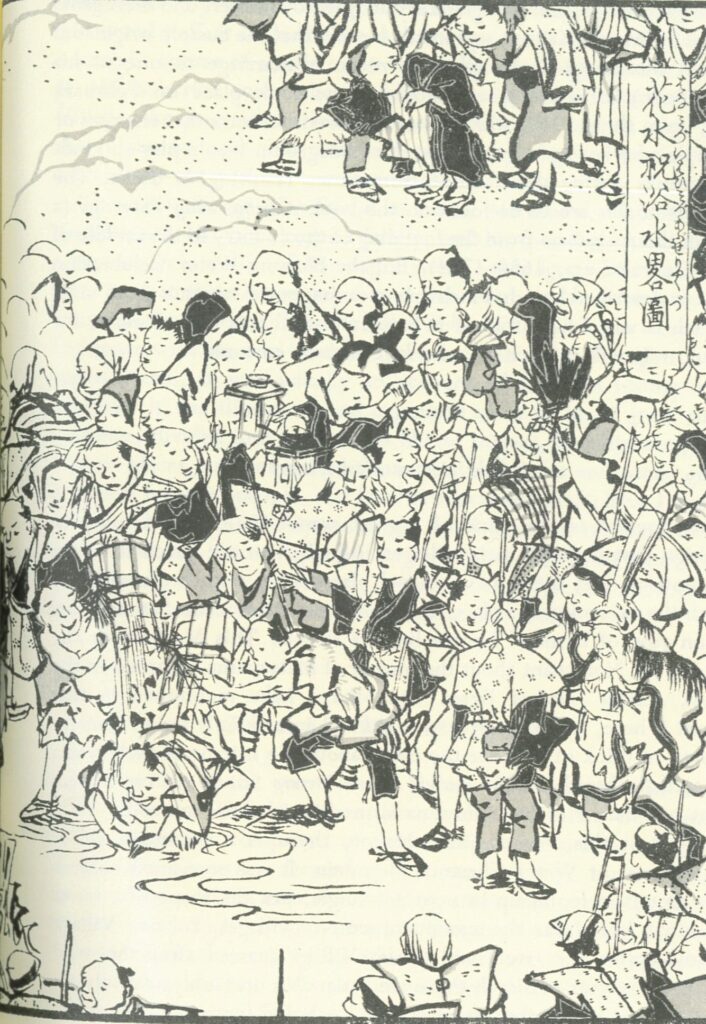
About Bokushi’s place in Snow Country history
The author Bokushi Suzuki wrote extensively on this festival and other local folklore. Bokushi was a local cloth merchant who became a literary phenomenon with his book “Snow Country Tales.” Realizing how little-known his homeland was, Bokushi eventually had an idea to publish a book of stories and anecdotes to teach city folk about life in YUKIGUNI, which would become Bokushi’s life’s work. “Snow Country Tales” is still widely read in Japanese to this day, and has been translated into multiple languages, including English.
Having grown up in YUKIGUNI, Bokushi was well acquainted with the spiritual lives and traditions of the people here. YUKIGUKI spirituality also included ascetic practices, such as enduring extreme cold as a way to purify oneself. People here observed special ceremonies for certain times of the year, such as the Echigo Urasa Naked Festival, where people would pack into the Fukoji temple in Minamiuonuma while scantily clad to harness the power of the deity Bishamonten.
The book contains folklore as well as practical information, such as what to do when caught in a blizzard. The book includes illustrations of snowflakes, which were based on those that were taken with an early microscope, and were the first of their kind.
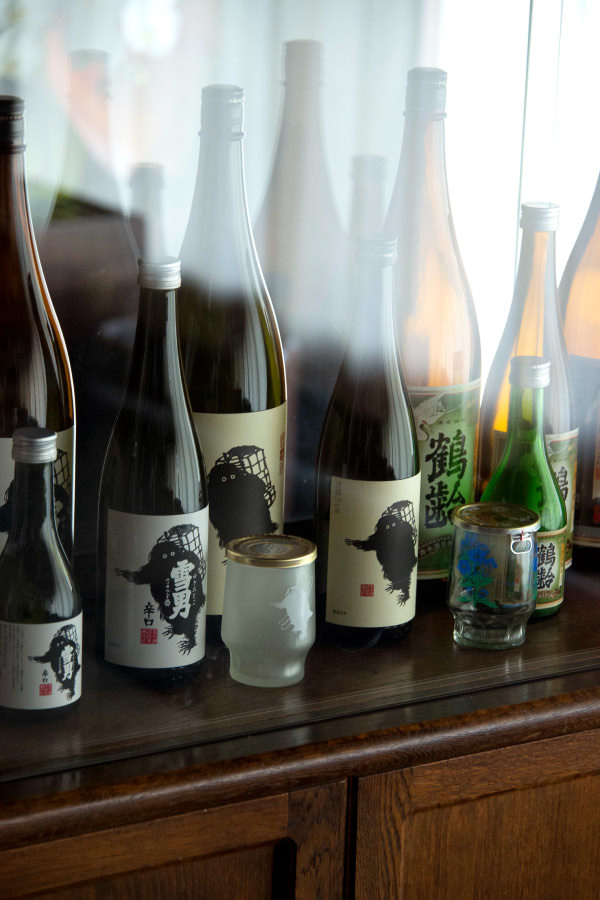
There is also the legend of the Yuki Otoko: often described as a giant ape covered from head to toe in thick white fur with shining eyes. Rather than being aggressive toward people, they were said to be quite friendly, and would help travelers who became lost in the mountains. These days, Yuki Otoko is also well known as a symbol of Minamiuonuma’s Aoki Sake Brewery, from which there is a popular sake that bears the same name. Aoki Brewery itself is a well-loved local brewery, and YUKIGUNI sake is famed for its quality and crisp taste.
Bokushi also wrote about the rituals surrounding Echigo Jofu cloth, which became a significant source of income as they were famed in antiquity, and even given as gifts to the Emperor and other royalty. In the past, weaving highly prized Echigo Jofu cloth was thought to be almost be akin to a holy ceremony.
As Bokushi was fastidious about keeping everything, there are all sorts of one-of-a-kind items on display, which include explanations in English, at the museum that bears his name. Also nearby is Bokushi-dori, the historic street that was renovated in an Edo-period style. As you stroll these old-world cobblestone roads, you will come to see that in many ways, our contemporary “Yukiguni Style” still shares surprising similarities with the world as Bokushi knew it two hundred years ago.
